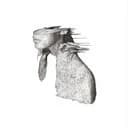Theoretical Construction and the Augmented 2nd Interval
The D-flat Harmonic Major scale follows the interval formula: whole step, whole step, half step, whole step, half step, augmented 2nd, half step. The defining characteristic is the augmented 2nd interval (three semitones) between the lowered 6th degree (B♭♭) and the major 7th (C). This wide interval creates an exotic, Middle Eastern-inspired sound quality that distinguishes harmonic major from its parent major scale. The scale's intervallic structure from the root consists of: major 2nd (E♭), major 3rd (F), perfect 4th (G♭), perfect 5th (A♭), minor 6th (B♭♭), and major 7th (C). This combination of a major triad with a minor 6th creates unique harmonic possibilities, particularly when building seventh chords and extended harmonies.
Historical Context and Compositional Usage
While harmonic major scales are less common in traditional Western classical music compared to their harmonic minor counterparts, they have found significant use in 20th and 21st-century composition, particularly in film scoring and jazz. The scale's augmented 2nd interval evokes exotic locales and creates dramatic tension, making it ideal for cinematic moments requiring mystery or cultural color. Jazz musicians have embraced the harmonic major scale for its fresh melodic possibilities and the dominant 7th chord built on the 5th degree, which resolves naturally to the tonic. The scale's relationship to B-flat Melodic Minor (beginning on the 3rd degree) has made it particularly valuable for modal improvisation and composition, allowing smooth modulation between different tonal centers.
Harmonic Possibilities and Chord Progressions
The D-flat Harmonic Major scale generates distinctive chord qualities that expand traditional major key harmony. The tonic chord (D♭ major) remains stable, but the lowered 6th degree produces a B♭♭ diminished triad on the 6th degree and an augmented triad on the 3rd degree (F augmented). The dominant chord (A♭7) naturally leads to the tonic, while the ii chord becomes minor (E♭m), similar to minor key progressions. This creates opportunities for dramatic chord progressions such as D♭maj7 - E♭m7 - A♭7 - D♭maj7, which combines major key brightness with minor key color. The augmented triad on F (F-A♭-C) can function as a chromatic passing chord or create unexpected harmonic movement. Composers can also exploit the scale's relationship to G-flat Major (the IV chord) and A-flat Major (the V chord) to create smooth modulations while maintaining the harmonic major color.
Practice Approaches and Scale Relationships
When practicing the D-flat Harmonic Major scale, focus initially on the augmented 2nd interval between B♭♭ and C to internalize its distinctive sound. Comparing it directly with the D-flat Major scale helps identify the single altered note and understand the harmonic shift. Practice building triads and seventh chords on each degree to explore the scale's unique chord qualities. Since D-flat Harmonic Major is enharmonically equivalent to C-sharp Harmonic Major, pianists may find the latter easier to read in certain contexts, though both fingerings should be mastered. Explore the modal relationship to B-flat Melodic Minor by practicing both scales back-to-back and recognizing shared pitch content. Incorporate the scale into improvisation over major key progressions, particularly when resolving to the tonic, to develop an intuitive feel for its application in real musical contexts.





